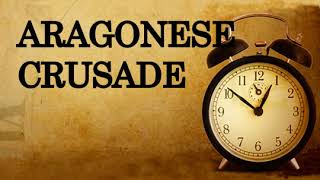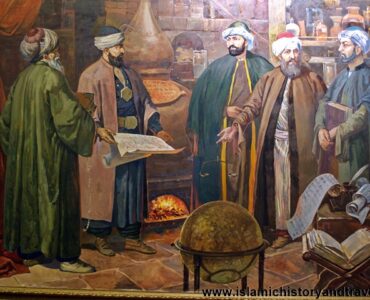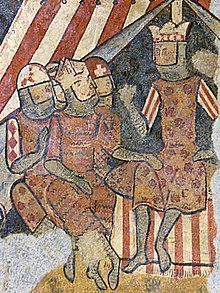
The Lesser Crusades
Call For Crusade
During the Holy Week (March) of 1195, Emperor Henry made a pledge and at the Easter celebrations in Bari publicly announced the Crusade. Henry’s original plan in April 1195 was for a force of 1,500 knights and 3,000 sergeants, but this total would be exceeded. In the summer he was travelling through Germany in order to gain supporters. Despite the stalemate of the Third Crusade, a large number of the nobles responded, among them:
- Archbishop Conrad of Mainz, the Arch-chancellor of Germany, and Archbishop Hartwig of Bremen;
- Nine Bishops, including Wolfger of Passau, Conrad of Hildesheim;
- Five dukes: Henry of Brabant, Berthold of Merania, Frederick of Austria, his uncle Henry of Mödling and the emperor’s cousin Hermann I, Landgrave of Thuringia;
- Various counts: including Henry V of the Rhine, Meinhard II of Gorizia, Eberhard of Dörnberg;
A large number of minor nobles also joined the Crusade and before long, according to Arnold von Lübeck in his Arnoldi Chronica Slavorum, a powerful military host of 60,000, including 7,000 German knights, was on its way. A contemporary chronicler gave a lower estimate of 4,000 knights and an unknown amount of infantry. German historian Claudia Naumann suggested in 1994 that the Crusade had 16,000 men, including 3,000 knights. Bretislaus III, Duke of Bohemia had agreed to join the Crusade at the Diet in Worms in December 1195, and planned to do so, until he fell ill and died on 15 or 19 June 1197.
In March 1197 Henry proceeded to the Kingdom of Sicily. The crusaders embarked for Acre, while the emperor first had to suppress an armed revolt in Catania. A force of 3,000 Saxon and Rhenish troops in 44 ships under Count Palatine Henry V and Archbishop Hartwig of Bremen sailed from northern Germany and arrived in Messina in August, where they merged with the emperor’s troops and sailed to the Eastern Mediterranean. Still in Sicily, out for hunting near Fiumedinisi in August, Emperor Henry fell ill with chills, possibly from malaria. He died on September 28 before he could set sail for the Holy Land.
Campaign
On 22 September 1197 a substantial German army under the command of Arch-chancellor Conrad of Mainz and Marshal Henry of Kalden landed at Acre, where their presence aroused the displeasure of the French forces of Queen Isabella of Jerusalem. As the German Princes denied the authority of Henry of Kalden, they elected Duke Henry of Brabant their commander and the crusaders proceeded to Tyre, initiating a campaign to expel the Muslims from Beirut and to subject the Levant coast up to Tripoli. They captured the wealthy and important city of Sidon and on October 24 entered Beirut. With the support of the Princes, Emperor Henry’s vassal King Amalric of Cyprus married Queen Isabella and was crowned King of Jerusalem (as Amalric II) in 1198.
The crusaders continued their campaign and by reconquering the estates around Byblos Castle restored the land link to the County of Tripoli. They even marched against Damascus and laid siege to Toron, when news of the emperor’s death reached them. By July 1198 most of the nobles had returned home to get their fiefs confirmed by Henry’s successor. The remaining crusaders concluded another armistice in June 1198 with the Ayyubid emir Al-Adil I, who acknowledged the rule of King Amalric II over the reconquered land. In his capacity as King of Jerusalem, Amalric willed the Lordship of Beirut to John of Ibelin and the Lordship of Sidon to Reginald Grenier. On his way back to Germany, Archbishop Conrad of Mainz in January 1198 crowned Prince Leo of Cicilia King of Armenia in Tarsus.
Aftermath
Overshadowed by Henry’s death, the Crusade did not realize his high-flying ambitions. Nevertheless, the weakening of the Byzantine Empire persisted and established a basis for the Fourth Crusade and the Sack of Constantinople in 1204. At the same time the originally intended reconquest of Jerusalem was abandoned, when the armistice with the Ayyubid dynasty was renewed for another six years.
The German Princes later on concentrated on their land acquisitions in the territories of the Polabian Slavs initiated by the Wendish Crusade of 1147. The Teutonic Order, established during the Siege of Acre in 1190 and elevated to a chivalric order during the German Crusade in March 1198, played an important role in the German eastward expansion to Prussia and the adjacent Baltic region in the 13th century.
Call For Crusade
802 – 007
https://discerning-Islam.org
Last Updated: 01/2022
See COPYRIGHT information below.



